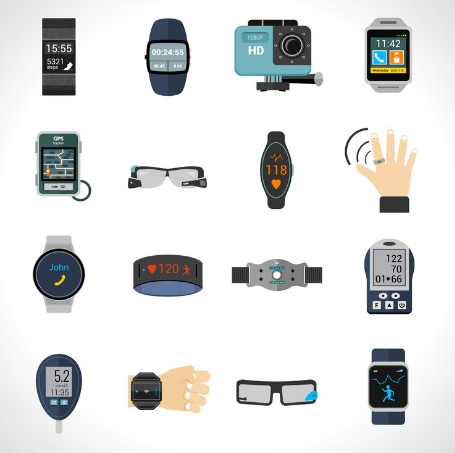Introduction: In the ever-evolving landscape of telecommunications, the emergence of 5G technology represents a monumental leap forward in connectivity, promising to redefine the way we live, work, and interact with the world around us. As the fifth generation of wireless technology, 5G holds the potential to revolutionize industries, drive innovation, and empower societies on a global scale. In this in-depth exploration, we delve into the transformative power of 5G technology, uncovering its key features, applications, and the profound impact it is poised to have on the digital ecosystem.
Understanding 5G Technology: At its core, 5G technology represents a convergence of cutting-edge innovations in wireless communication, network infrastructure, and digital connectivity. Unlike its predecessors, which focused primarily on delivering faster data speeds, 5G is designed to offer a comprehensive suite of capabilities, including ultra-low latency, massive connectivity, and enhanced reliability. Leveraging advanced radio technologies, spectrum allocation, and network architecture, 5G networks are engineered to support a diverse range of applications and use cases, from immersive multimedia experiences to mission-critical IoT deployments.
Key Features of 5G Technology:
- Gigabit-Speed Data Rates: With peak data rates surpassing 10 gigabits per second (Gbps), 5G technology enables lightning-fast downloads, seamless streaming, and immersive multimedia experiences on mobile devices, IoT devices, and other connected platforms.
- Ultra-Low Latency: reducing latency to milliseconds, 5G facilitates real-time communication and responsiveness, essential for applications such as gaming, virtual reality (VR), autonomous vehicles, and remote surgery, where split-second decisions are critical.
- Massive Connectivity: 5G networks are capable of supporting a significantly higher density of connected devices, ranging from smartphones and wearables to IoT sensors and smart infrastructure components, laying the foundation for a truly interconnected world.
- Network Slicing: Through network slicing, 5G enables operators to allocate network resources dynamically, creating virtualized network slices tailored to specific applications, industries, or user groups, ensuring optimal performance, efficiency, and flexibility.
- Enhanced Reliability and Resilience: With advanced features such as network densification, beamforming, and self-healing capabilities, 5G networks are designed to deliver enhanced reliability and resilience, even in densely populated urban environments and challenging operating conditions.
Applications of 5G Technology:
- Enhanced Mobile Broadband (eMBB): 5G technology transforms the mobile experience by offering faster download speeds, smoother streaming, and higher-quality multimedia content on smartphones, tablets, and other mobile devices, enhancing productivity and entertainment.
- Internet of Things (IoT): With its ability to connect billions of IoT devices, 5G facilitates the deployment of smart cities, industrial automation, environmental monitoring, and connected healthcare solutions, driving efficiency, sustainability, and innovation across industries.
- Autonomous Vehicles: 5G’s low latency and high reliability are essential for enabling real-time communication and coordination among autonomous vehicles, paving the way for safer and more efficient transportation systems, reducing accidents, and optimizing traffic flow.
- Augmented Reality (AR) and Virtual Reality (VR): 5G unlocks immersive AR and VR experiences by delivering high-resolution content and ultra-low latency, enabling applications such as remote training, virtual meetings, and interactive gaming, transforming entertainment, education, and collaboration.
- Telemedicine and Remote Surgery: The reliability and low latency of 5G networks enable real-time remote consultations, diagnostic imaging, and even remote surgery, revolutionizing healthcare delivery, expanding access to care, and saving lives, particularly in underserved areas.
Challenges and Considerations: While the potential of 5G technology is vast, it also presents several challenges and considerations that must be addressed to realize its full potential:
- Infrastructure Deployment: Building the necessary infrastructure, including small cells, fiber-optic cables, and base stations, requires significant investment, coordination, and regulatory approvals, particularly in densely populated urban areas and remote regions.
- Spectrum Allocation: Securing sufficient spectrum for 5G networks is essential to meet growing demand for wireless bandwidth, but spectrum allocation policies, regulations, and auctions can vary across regions and impact network performance, coverage, and affordability.
- Security and Privacy: As connectivity expands to encompass more devices and applications, concerns about data security, privacy, and potential cyber threats become increasingly paramount, necessitating robust security measures, protocols, and compliance frameworks.
- Digital Divide: Ensuring equitable access to 5G technology is crucial for bridging the digital divide and preventing further disparities in connectivity, particularly in rural and underserved communities where access to high-speed internet remains limited or nonexistent.
- Regulatory Frameworks: Developing clear and consistent regulatory frameworks is essential to address spectrum management, infrastructure deployment, security, privacy, and consumer protection concerns associated with 5G technology, fostering innovation, competition, and consumer trust.
Future Outlook: Despite these challenges, the future outlook for 5G technology is exceedingly promising. As infrastructure deployment accelerates, ecosystem maturity grows, and use cases expand, 5G is poised to become the backbone of the digital economy, powering transformative applications and services across industries, economies, and societies. fostering collaboration, innovation, and inclusive development, 5G technology has the potential to unlock new opportunities for economic growth, social progress, and sustainable development, ushering in a new era of connectivity, innovation, and possibility for generations to come.




